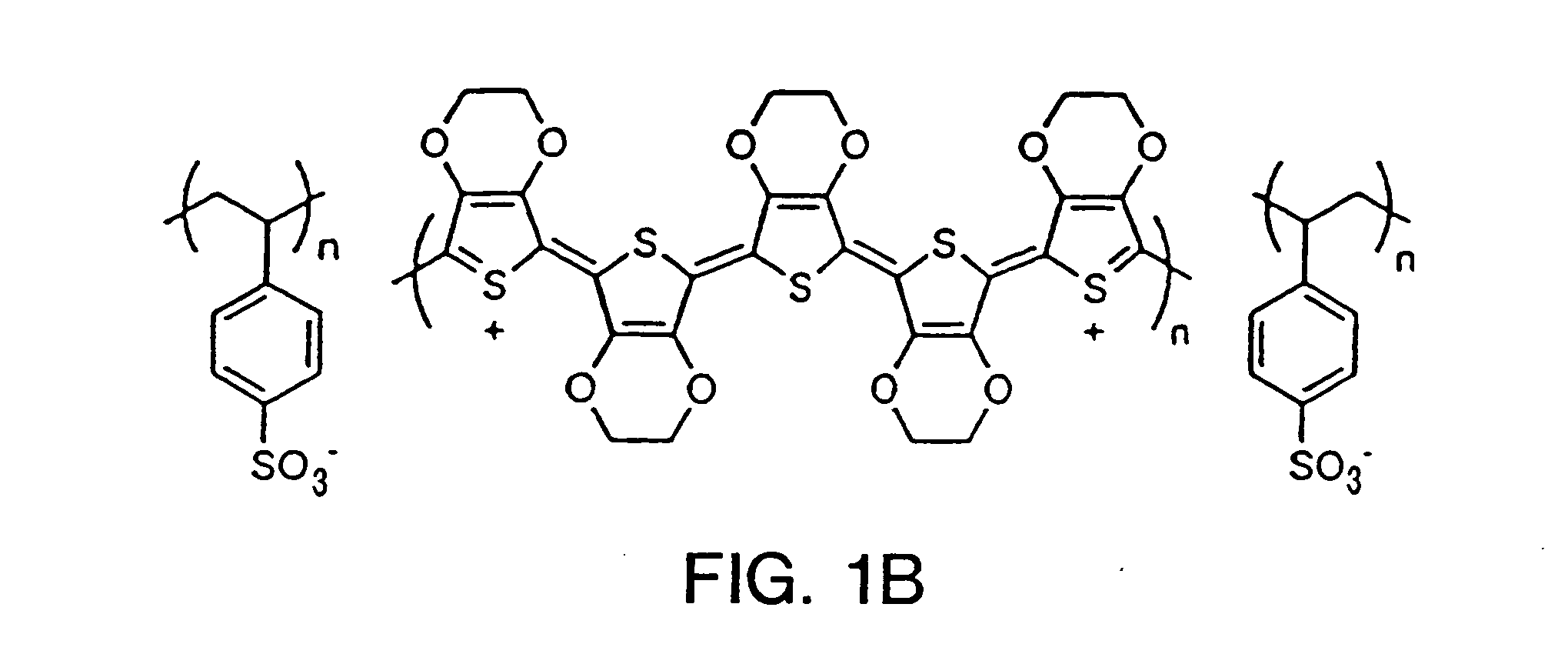Sensors and sensor arrays of conducting and insulating composites and methods of use thereof
a composite material and sensor array technology, applied in the field of sensors and sensor systems, can solve the problems of limiting the utility of such sensors to very specific situations, not allowing deliberate chemical control of the response, and most chemical sensors suffer from interference, etc., to achieve the effect of increasing the performance and information content of the sensor array and enhancing the sensitivity
- Summary
- Abstract
- Description
- Claims
- Application Information
AI Technical Summary
Benefits of technology
Problems solved by technology
Method used
Image
Examples
examples
[0091] Fabrication of a stable and diverse array of chemiresistor-type vapor detectors from soluble, processable, polar conducting organic polymers is provided. The detectors in the sensor array consist of either a blend or composite of commercially available poly(3,4-ethylenedioxy)thiophene (PEDOT-PSS) (FIG. 1) with a number of different insulating polymers. PEDOT-PSS was chosen for several reasons as the conductive polymer used in this study. PEDOT is relatively inexpensive and is sold commercially (Baytron P) as a colloidal suspension in water. The poly(styrene sulphonate), PSS, that is intimately associated through electrostatic attractions with the p-doped poly(3,4-ethylenedioxy)thiophene contributes to the stability of the colloid. PEDOT-PSS films cast from solution have been shown to exhibit superior environmental stability due to both the electron richness concentrated in the polymer backbone and the inertness of the thiophene heterocycle (compared to that of pyrrole) as wel...
PUM
| Property | Measurement | Unit |
|---|---|---|
| frequency | aaaaa | aaaaa |
| thicknesses | aaaaa | aaaaa |
| thicknesses | aaaaa | aaaaa |
Abstract
Description
Claims
Application Information
 Login to View More
Login to View More - R&D
- Intellectual Property
- Life Sciences
- Materials
- Tech Scout
- Unparalleled Data Quality
- Higher Quality Content
- 60% Fewer Hallucinations
Browse by: Latest US Patents, China's latest patents, Technical Efficacy Thesaurus, Application Domain, Technology Topic, Popular Technical Reports.
© 2025 PatSnap. All rights reserved.Legal|Privacy policy|Modern Slavery Act Transparency Statement|Sitemap|About US| Contact US: help@patsnap.com



